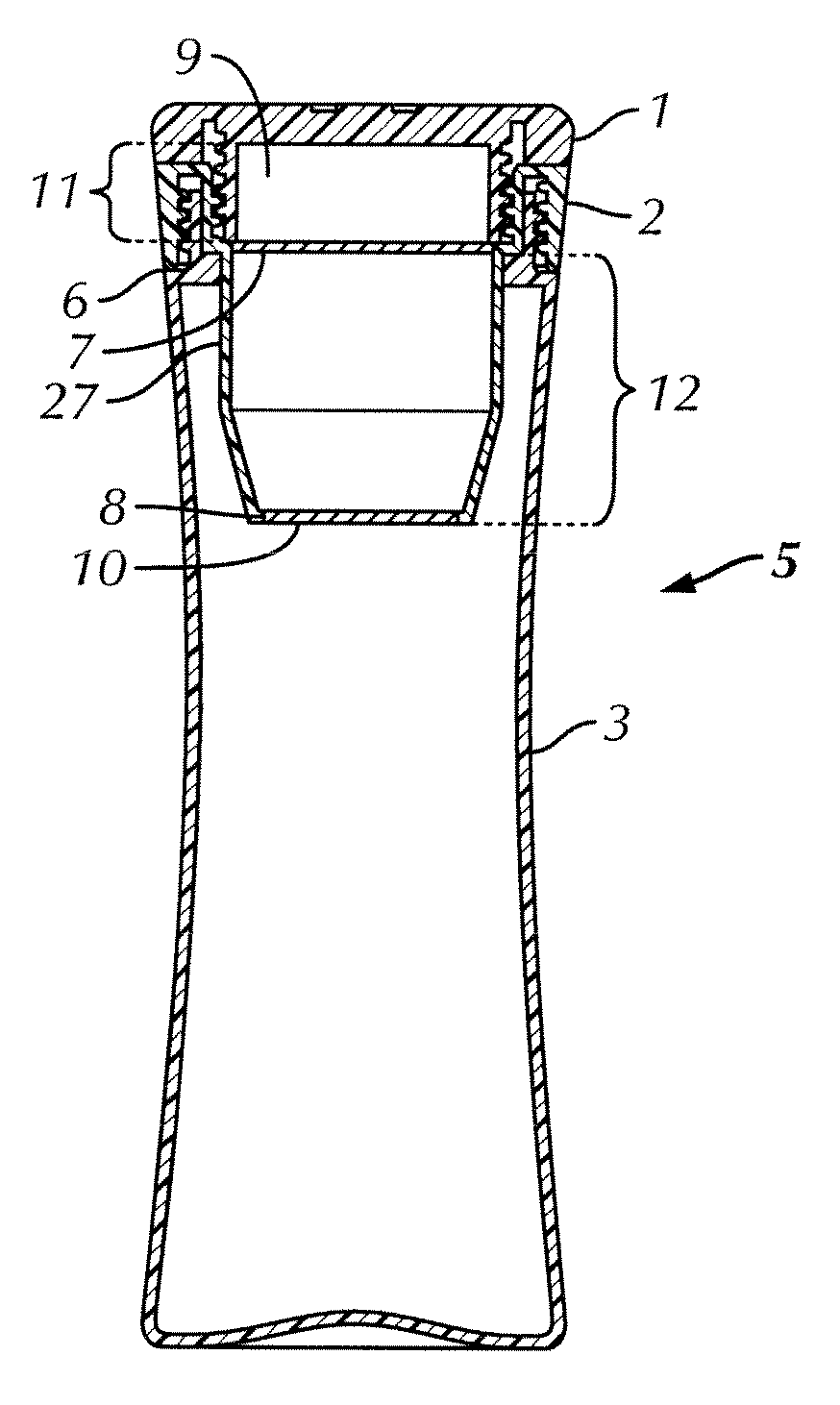Filtering water bottle
a filter water bottle and water filter technology, applied in the field of reusable water bottles, can solve the problems of increasing the awareness of the incredible cost and environmental damage caused by the industry, requiring long filtration times, and providing no portability, so as to enhance contaminant reduction and filtration efficacy, enhance contaminant reduction, and enhance the effect of filtration efficacy
- Summary
- Abstract
- Description
- Claims
- Application Information
AI Technical Summary
Benefits of technology
Problems solved by technology
Method used
Image
Examples
Embodiment Construction
[0024]With perception of the quality of tap water being low and acceptance of water filtration being high (based on popularity of use home filtration units), people are looking for an improved mobile point-of-use filtration system.
[0025]Known reusable filtering water bottles are inconvenient, complicated, expensive, and only filter water as the water is departing the bottle through the filter, in other words, they only filter water on the way out of the bottle. These designs force users to adapt their way of drinking water from their bottle; for example, users have to strenuously squeeze the bottle to force water through the filter and into their mouth, strenuously suck water out of the filter, etc.
[0026]Gravity flow filtration systems known in the art include primarily pour-through carafes or pitchers and refrigerator water tanks developed by Clorox (BRITA®), Culligan™, Rubbermaid™, and Glacier Pure™. Some of the drawbacks of leading pitcher filters include weak acid cation exchang...
PUM
| Property | Measurement | Unit |
|---|---|---|
| diameter | aaaaa | aaaaa |
| radius | aaaaa | aaaaa |
| diameter | aaaaa | aaaaa |
Abstract
Description
Claims
Application Information
 Login to View More
Login to View More - R&D
- Intellectual Property
- Life Sciences
- Materials
- Tech Scout
- Unparalleled Data Quality
- Higher Quality Content
- 60% Fewer Hallucinations
Browse by: Latest US Patents, China's latest patents, Technical Efficacy Thesaurus, Application Domain, Technology Topic, Popular Technical Reports.
© 2025 PatSnap. All rights reserved.Legal|Privacy policy|Modern Slavery Act Transparency Statement|Sitemap|About US| Contact US: help@patsnap.com



